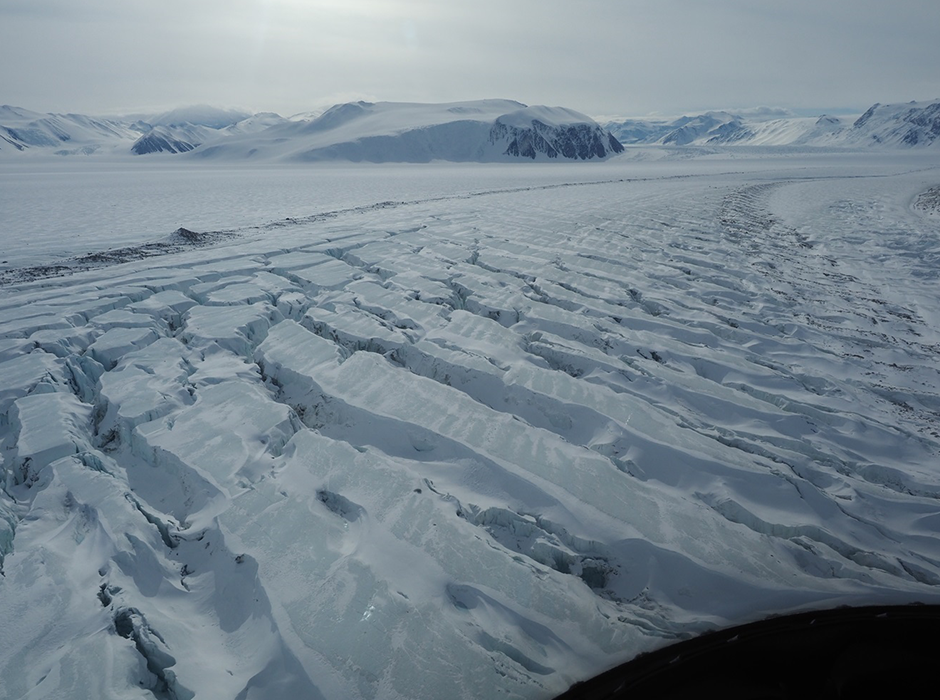
Lead author Dr Sheng Fan after completing the McMurdo Station Marathon 2018-2019 on the Ross Ice Shelf, with Mount Erebus in the background.
A University of Otago – Ōtākou Whakaihu Waka-led study is developing innovative methods to accurately predict how ice sheets and glaciers are deforming and moving.
Just published in the journal Nature Geoscience, the study is supported by The Royal Society Te Apārangi Marsden Fund and Antarctica New Zealand, and features researchers from the Universities of Cambridge, Pennsylvania and Maryland.

Dr Sheng Fan
It investigates ice deformation – a key process in the movement of glaciers and ice sheets, that has been significantly impacted by climate change.
Warmer ocean temperatures make ice sheets thinner at the edges so that ice and meltwater enter the ocean, which makes the sea level rise.
Lead author Dr Sheng Fan, of Otago’s Department of Geology, says being able to estimate sea level rise is important to protect communities from flooding and plan for coastal erosion.
“One of the key parts of how scientists do this is based on a model called flow law, a mathematical equation that describes the physics of how ice flows,” Dr Fan says.
There are currently two commonly used flow laws, but they do not capture the full complexity of ice behaviours.
“We need a more precise flow law so we can reduce prediction errors, especially with the way climate change is progressing.”

A glacier in Priestley Glacier, Terra Nova Bay, Antarctica, featuring debris which has fallen from higher in the mountains. The surface of the glacier is fractured by the middle of the glacier moving much faster than the edge of the glacier. Photograph: David Prior
Researchers gathered 70 years’ worth of data from experiments around the world – including New Zealand, the United Kingdom, the United States, Australia and France – to form a detailed data base.
The research used advanced statistical methods that account for uncertainties and limitations of previous ice-flow models, enabling more reliable predictions about future ice-sheet movement.
Professor David Prior, of the Department of Geology, says the study is significant.
“There are lots of things that contribute to sea level rise and the future of the ice sheet is probably the biggest uncertainty,” Professor Prior says.
“This study illustrates that we need to describe the behaviour of the ice much more precisely, particularly if we want to use ice sheet modelling as a predicting tool.
“If we want our predictions of ice movement over the next few decades to be robust, we need to get the physics right.”
Interested in studying Geology?
Many of the world’s critical future challenges lie in the realm of geology: climate change, water quality, sustainability and resources, natural hazards, renewable energy, and infrastructure. Geology – the study of the Earth and planets – is more relevant today than ever before. If you are passionate about making a difference in an ever- changing society and environment, and want to have adventures that will last a lifetime, geology is for you.
Find out more